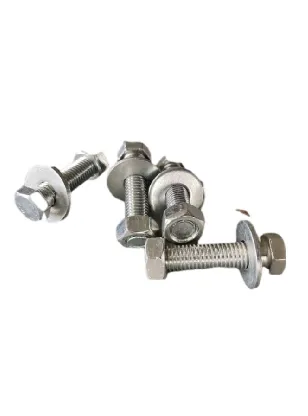loading...
- No. 9, Xingyuan South Street, Dongwaihuan Road, Zaoqiang County, Hengshui, Hebei, China
- admin@zjcomposites.com
- +86 15097380338
- Welcome to visit our website!
Exploring the Applications and Benefits of Structural Fiber Reinforced Polymers in Construction
The Role of Structural FRP (Fiber Reinforced Polymer) in Modern Construction
In recent years, the construction industry has seen a significant shift towards the adoption of innovative materials that not only enhance the durability and sustainability of structures but also improve performance and efficiency. One such material that has gained considerable attention is Fiber Reinforced Polymer (FRP). This composite material, which combines polymer resins with various types of fibers—typically glass, carbon, or aramid—has emerged as a remarkable solution in various applications within structural engineering.
Understanding FRP
FRP is composed of a matrix material (usually a polymer) reinforced with fibers that help to distribute loads and provide strength. The combination produces a material that is both lightweight and incredibly strong, offering advantages over traditional materials like steel and concrete. FRP can be engineered to exhibit desirable mechanical properties tailored to specific applications, making it a versatile choice for modern construction projects.
Advantages of FRP in Structural Applications
1. Corrosion Resistance One of the standout benefits of FRP is its exceptional resistance to corrosion. Unlike steel, which can deteriorate when exposed to moisture and salt, FRP maintains its integrity even in harsh environmental conditions. This property is particularly advantageous for structures such as bridges and marine constructions, where exposure to corrosive elements is a concern.
2. Lightweight Nature FRP is considerably lighter than traditional construction materials. This characteristic reduces the overall weight of structures, which not only simplifies handling and installation but also decreases the demand on foundations and supporting systems. The lightweight nature of FRP can lead to significant savings in material and labor costs during construction.
3. High Strength-to-Weight Ratio The strength-to-weight ratio of FRP is remarkable, often surpassing that of steel. This feature allows for the design of sleek, slender structures that do not compromise on strength. Architects and engineers can also utilize FRP to create innovative designs that would be structurally impossible with conventional materials.
4. Ease of Installation FRP components can be prefabricated outside the construction site, leading to reduced construction time and minimal inconvenience. This prefabrication not only enhances efficiency but also contributes to better quality control since elements can be manufactured in a controlled environment.
structural frp

5. Sustainability As global awareness of environmental issues grows, the sustainability of materials has become a focal point in construction. FRP can contribute to greener building practices due to its longevity and resistance to environmental wear. Moreover, many FRP products are designed to be recyclable, making them an eco-friendly choice compared to traditional materials.
Applications of FRP in Structural Engineering
The applications of FRP in structural engineering are diverse. One area of significant use is in the reinforcement of existing structures, where FRP materials can be applied to strengthen concrete and timber components without adding significant weight or bulk. This practice is particularly useful in retrofitting aging infrastructure to meet current safety standards.
In new constructions, FRP can be used in a variety of structural elements, such as beams, columns, and slabs, providing both strength and aesthetic flexibility. Its application in bridge design has also seen a rise, with many engineers utilizing FRP for its ease of construction and longevity, which are crucial factors in transportation infrastructure.
Challenges and Future Directions
Despite its many advantages, the use of FRP is not without challenges. Initial material costs can be higher than traditional options, and the long-term behavior of FRP under various conditions is still a concern for some engineers. Research is ongoing to develop better bonding techniques and improved durability assessments for FRP materials.
Looking forward, the potential for FRP in structural applications seems promising. As technology advances, we can expect developments that will enhance the capabilities of FRP, allowing it to become an even more integral part of sustainable construction practices. As we strive for innovative solutions to meet the demands of modern infrastructure, Fiber Reinforced Polymer stands out as a transformative material that is poised to reshape the future of construction.
In conclusion, the integration of FRP into structural engineering not only offers a plethora of benefits but also heralds a new era of innovative design and construction methods. With its unique properties, FRP is set to play a crucial role in building durable, efficient, and environmentally friendly structures for generations to come.
-
Why Choose a Galvanized Water Tank for Your Storage NeedsNewsMay.21,2025
-
The Strength and Durability of FRP GratingNewsMay.21,2025
-
The Importance of Water Treatment Systems for Clean and Safe WaterNewsMay.21,2025
-
The Advantages of FRP Rebar for Construction ProjectsNewsMay.21,2025
-
Say Goodbye to Hard Water with a Reliable Water SoftenerNewsMay.21,2025
-
Maximize Your Water Storage with a Sectional Water TankNewsMay.21,2025
-
The Power of Filter VesselsNewsMay.19,2025
